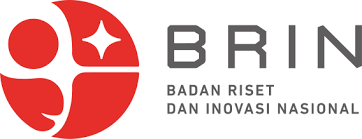Analysis Study of Cultural Aspects on Travel to South Korea
DOI:
https://doi.org/10.61166/interdisiplin.v1i4.23Keywords:
South Korea, Culture, Visit.Abstract
People have been impacted by Korean culture due to its global prominence. This Korean culture, sometimes referred to as the Hallyu phenomenon or Korean Wave, encompasses a variety of mediums including fashion, music, theater, makeup, and more. The purpose of this study is to examine how South Korea's cultural phenomena have influenced all generations and contributed to the country's appeal as a travel destination and perhaps inspire plans to travel to South Korea in the near future. The study employed a quantitative methodology and included 116 respondents from the surrounding area. Google Forms is used for online questionnaire delivery. SmartPLS software is used to process the data. We anticipate that the research's findings will give travelers more knowledge about South Korea's attractions, things to do, and other resources so they may make well-informed travel plans. The study's overall conclusions emphasize the significance of perceived advantages and cultural elements in shaping travel intentions to South Korea. The report also emphasizes how important electronic word-of-mouth is in forming traveler perceptions. The ramifications of these findings extend to destination managers and marketers, who may leverage these insights to create customized marketing campaigns that address the interests and needs of prospective guests.
References
Adeliasari, Ivana, V., & Thio, S. (2014). ELECTRONIC WORD-OF-MOUTH (e-WOM)
DAN. Jurnal Hospitality Dan Manajemen Jasa, 2(2), 1–13.
Agarwal, N., & Mohan, A. (2021). Influence of Social Interaction on Customer Experience in Tourism Industry. Purushartha, 14(2), 104–116. https://doi.org/10.21844/16202114209
Ajzen, I. (2012). The theory of planned behavior. Handbook of Theories of Social Psychology: Volume 1, July, 438–459. https://doi.org/10.4135/9781446249215.n22
Al-Debei, M. M., Akroush, M. N., & Ashouri, M. I. (2015). Consumer attitudes towards online shopping: The effects of trust, perceived benefits, and perceived web quality. Internet Research, 25(5), 707–733. https://doi.org/10.1108/IntR-05-2014-0146
Amanda, T., Winoto Tj, H., Kusniawati, A., & Surjaatmadja, S. (2021). Effect of Electronic Word Of Mouth, Product Quality, and Price on Purchase Intention. Budapest International Research and Critics Institute-Journal (BIRCI-Journal), 4 (3), 6181–6190. 6181–6190.
Barri, H. G., Saerang, D. P. E., & Tumiwa, J. R. (2017). The Impact of Viral Marketing Using Social Media Platforms on Brand Awareness (Case Study: Laneige Cosmetic). Jurnal EMBA: Jurnal Riset Ekonomi, Manajemen, Bisnis Dan Akuntansi, 5(3), 3945– 3954.
Chen, L., & Yang, X. (2019). Using EPPM to Evaluate the Effectiveness of Fear Appeal Messages Across Different Media Outlets to Increase the Intention of Breast Self- Examination Among Chinese Women. Health Communication, 34(11), 1369–1376. https://doi.org/10.1080/10410236.2018.1493416
Damayanti, D., Megawaty, D. A., Rio, M. G., Rubiyah, R., Yanto, R., & Nurwanti, I. (2020). Analisis Interaksi Sosial Terhadap Pengalaman Pengguna Untuk Loyalitas Dalam Bermain Game. JSI: Jurnal Sistem Informasi (E-Journal), 12(2). https://doi.org/10.36706/jsi.v12i2.12315
Dwiandini, A. P., Rahmawati, A., Maharani, A., Wulandari, R., & Suhud, U. (2021). Analisis Faktor-Faktor yang Mempengaruhi Intention to Visit Perkampungan Suku Baduy selama Pandemi. Jurnal Bisnis, Manajemen, Dan Keuangan, 2(3), 629–648.
Ghahtarani, A., Sheikhmohammady, M., & Rostami, M. (2020). The impact of social capital and social interaction on customers’ purchase intention, considering knowledge sharing in social commerce context. Journal of Innovation and Knowledge, 5(3), 191–199. https://doi.org/10.1016/j.jik.2019.08.004
Hare, A. P. (1958). The dimensions o f social interaction’.
Hernandi, M. F. (2014). Pengaruh Destination Image ( Cognitive dan Affective Image ) Terhadap Customer Loyalty melalui Customer Satisfaction : Studi Kasus Wisatawan Nusantara yang Sedang Berlibur di Bali. 200911039, 1–24. http://repository.ibs.ac.id/id/eprint/740
Hidayati, N. (2022). Pengaruh Social Media Instagram Terhadap Visit Intention ke Tempat Wisata.
Huang, S. (2011). Nation-branding and transnational consumption: Japan-mania and the Korean wave in Taiwan. Media, Culture and Society, 33(1), 3–18. https://doi.org/10.1177/0163443710379670
Jalilvand, M. R., Esfahani, S. S., & Samiei, N. (2011). Electronic word-of-mouth: Challenges and opportunities. Procedia Computer Science, 3, 42–46. https://doi.org/10.1016/j.procs.2010.12.008
Ju, H., & Lee, S. (2015). The Korean Wave and Asian Americans: The ethnic meanings of transnational Korean pop culture in the USA. In Continuum (Vol. 29, Issue 3, pp.
–338). Taylor & Francis. https://doi.org/10.1080/10304312.2014.986059
Juniatrie, R., & Trisnani, R. P. (2019). Pengaruh social interaction dan self concept terhadap perilaku konsumtif siswa Kelas VIII. Prosiding Seminar Nasional …, 3(1), 98–104. http://prosiding.unipma.ac.id/index.php/ SNBK/article/view/1410
Kim, H. M. (2005). Korean TV Dramas in Taiwan: With an Emphasis on the Localization Process. Korea Journal, 45(4), 183–205.
Koo, S. K. (2013). The Effect Of Destination Image, Event Image, And Satisfaction In Determining Behavioral Intention: Recurring Small-Scale Event. Вестник Росздравнадзора, 81.
Kreijns, K., & Kirschner, P. A. (2002). Group awareness widgets for enhancing social interaction in computer-supported collaborative learning environments: Design and implementation. Proceedings - Frontiers in Education Conference, 1, 14–20. https://doi.org/10.1109/fie.2002.1157973
Lee, C. G., & How, S. M. (2022). Hallyu tourism: impacts on inbound tourists to South Korea. Current Issues in Tourism, 25(9), 1361–1367. https://doi.org/10.1080/13683500.2021.1924637
Lee, T. H., & Jan, F. H. (2018). Ecotourism Behavior of Nature-Based Tourists: An Integrative Framework. Journal of Travel Research, 57(6), 792–810. https://doi.org/10.1177/0047287517717350
Liang, S. H., & Lai, I. K. W. (2023). Tea tourism: Designation of origin brand image, destination image, and visit intention. Journal of Vacation Marketing, 29(3), 409–427. https://doi.org/10.1177/13567667221099952
Masykur, F., Widiartanto, W., & Saryadi, S. (2022). Pengaruh Destination Image dan Fasilitas Wisata terhadap Revisit Intention (Studi pada Pengunjung Wisata Alam Seroja di Kabupaten Wonosobo). Jurnal Ilmu Administrasi Bisnis, 11(2), 170–179. https://doi.org/10.14710/jiab.2022.34251
Melisa, M., Suyanto, S., & Tanaya, O. (2023). “korean Wave in Indonesia: Are there any changes in perception and intention to visit Korea?” Innovative Marketing, 19(3), 171–186. https://doi.org/10.21511/im.19(3).2023.15
Mohamad, M., & Ab Ghani, N. I. (2014). Comparing Destination Image and Loyalty between First-time and Repeat-visit Tourists. SHS Web of Conferences, 12, 01047. https://doi.org/10.1051/shsconf/20141201047
Munif, A. (2018). Potret Masyarakat Multikultural di Indonesia. Journal Multicultural ofislamic Education, 2(1), 1–10. https://jurnal.yudharta.ac.id/v2/ index.php/ims/article/view/1219
Muzdalifah, S., Rahayu, S., & Andajani, E. (2019). Pengaruh E-Wom Terhadap Visit Intention Objek Wisata di Yogyakarta. Calyptra, 8(1), 827–835. https://journal.ubaya.ac.id/index.php/jimus/article/view/3719%0Ahttps://journal. ubaya.ac.id/index.php/jimus/article/download/3719/2838
Nguyen Viet, B., Dang, H. P., & Nguyen, H. H. (2020). Revisit intention and satisfaction: The role of destination image, perceived risk, and cultural contact. Cogent Business and Management, 7(1). https://doi.org/10.1080/23311975.2020.1796249
Noviyati Nabila, A., Asih, R. A., Putri Ramadhanti, S., Fakhrunnisa, F., & Suhud, U. (2021). Factors Influencing Intention To Visit South Korea During the Pandemic. JELAJAH: Journal of Tourism and Hospitality, 3(1), 43–57. https://doi.org/10.33830/jelajah.v3i1.1834
Nurhayat, K., & Shiratina, A. (2021). The Influence Of Country Image And Destination Image On Intention To Visit South Korea. International Journal of Environmental, Sustainability, and Social Science, 2(3), 144–154. ttps://doi.org/10.38142/ijesss.v2i3.86
Nuzulia, A. (2021). Pengaruh Sosial Media Instagram @Explorejogja Terhadap Visit Intention Generasi Z Pada Nature Tourism Di Yogyakarta, Dengan Destination Image Sebagai Variabel Mediasi. Angewandte Chemie International Edition, 6(11), 951–952., 13.
Permadi, E. G., & Waras, W. (2023). Pengaruh Social Comparison Terhadap Envy Dan Niat Mengunjungi Destinasi Wisata Di Instagram. Media Mahardhika, 22(1), 61–74. https://doi.org/10.29062/mahardika.v22i1.797
Polley, R. B. (1987). The Dimensions of Social Interaction: A Method for Improving Rating Scales. Social Psychology Quarterly, 50(1), 72. https://doi.org/10.2307/2786892
Prayogo, R. R., Ketaren, F. L. S., & Hati, R. M. (2017). Electronic Word of Mouth, Destination Image, and Satisfaction Toward Visit Intention: an Empirical Study in Malioboro Street, Yogyakarta. 81(Icosop 2016), 209–218. https://doi.org/10.2991/icosop-16.2017.31
Prim, A. L., Filho, L. S., Zamur, G. A. C., & Di Serio, L. C. (2017). The Relationship Between National Culture Dimensions And Degree Of Innovation. International Journal of Innovation Management, 21(1). https://doi.org/10.1142/S136391961730001X
Puspa Dewi, N. M., & Asti Aksari, N. M. (2019). 1 2 1,2. 8(11), 6598–6617.
Rani, A., Toni, M., & Shivaprasad, H. N. (2022). Examining the Effect of Electronic Word of Mouth (Ewom) Communication on Purchase Intention: a Quantitative Approach. Journal of Content, Community and Communication, 15(8), 130–146. https://doi.org/10.31620/JCCC 06.22/10
Rintamäki, T., Kanto, A., Kuusela, H., & Spence, M. T. (2006). Decomposing the value of department store shopping into utilitarian, hedonic and social dimensions: Evidence from Finland. International Journal of Retail & Distribution Management, 34(1), 6–24. https://doi.org/10.1108/09590550610642792
Riyanto, D. Y., Andrianto, N., Riqqoh, A. K., & Fianto, A. Y. A. (2019). Pengaruh Destination Image Dan Destination Branding Terhadap Minat Berkunjung Ke Wisata Bahari Jawa Timur. Prosiding Senama 2019, 2017, 1–10.
Saragih, L., Girsang, R. M., & Tarigan, W. J. (2021). Social Interaction Generasi Z Di Pematang Siantar : Antecedents Social Commerce Intention Dimana Social Commerce Construct Sebagai Variabel Intervining. 6(2).
Study, C., Consumers, O., Use, W., & Metland, T. (2020). Effect Of Perception Of Benefits
, Easy Perception Of Use , Trust And Risk Perception Towards Interest Using. 11, 1–19. Sucisanjiwani, G. A. C. A., & Yudhistira, P. G. A. (2023). Indonesian Generation Z’s Intention to Visit South Korea: The Mediating Role of Tourist Attitude on Travel Motivation and Celebrity Endorser Credibility. Jurnal Manajemen Teori Dan Terapan |Journal of Theory and Applied Management, 16(2), 399–416. https://doi.org/10.20473/jmtt.v16i2.44594
Suseno, N. S., Nurhadi, Z. F., Yulistina, Y., Komunikasi, F. I., Relations, K. P., Garut, U., Image, C. C., Image, C., Selatan, K., & Berkunjung, M. (n.d.). PENGARUH COUNTRY IMAGE TERHADAP MINAT. 52.
Ulmer-Yaniv, A., Avitsur, R., Kanat-Maymon, Y., Schneiderman, I., Zagoory-Sharon, O., & Feldman, R. (2016). Affiliation, reward, and immune biomarkers coalesce to support social synchrony during periods of bond formation in humans. Brain, Behavior, and Immunity, 56, 130–139. https://doi.org/10.1016/j.bbi.2016.02.017
Utari, T. (2018). ABSTRACT THE INFLUENCE OF PERCEIVED BENEFITS DIMENSION ON PURCHASE INTENTION IN SOCIAL COMMERCE CONTEXT ( Study at Social Commerce Users in Bandar Lampung ). 59.
Van Tubergen, F. (2020). Introduction to Sociology. Introduction to Sociology, April, 1–512. https://doi.org/10.4324/9781351134958
Williya. (2020). Bab ii kajian pustaka bab ii kajian pustaka 2.1. Bab Ii Kajian Pustaka 2.1, 12(2004), 6–25.
Wiyana, T., Adiati, M. P., & Wiastuti, R. D. (2018). Korelasi Antara Event Budaya Dengan Citra Destinasi Pada Solo International Performing Arts 2017. Jurnal Hospitality Dan Pariwisata, 4(1), 24–31. http://journal.ubm.ac.id/
Yadindrima, N. E., Subagiyo, A., & Wicaksono, A. D. (2021). Pengaruh Destination Image Kota Malang Terhadap Tourist Loyalty. Encyclopedia of Tourism Management and Marketing, 10(0341), 117–128.
Yang, S., Isa, S. M., Yao, Y., & Xia, J. (2011). Cognitive image, affective image, cultural dimensions, and conative image: A new conceptual framework.
Yanti, N. W. N., Ardani, W., & Putri, I. A. S. (2022). Peningkatan Trust and Visit Intentions Wisatawan ke Destinasi Wisata di Bali melalui Presidensi G20 Indonesia (Studi Kasus di Monkey Forest, Ubud). Lensa Ilmiah: Jurnal Manajemen Dan Sumberdaya, 1(1), 46–52. https://doi.org/10.54371/jms.v1i1.162
Yunfin, M., Kusumah, E. P., MS, M., & Reniati, R. (2023). Revisit Intention Framework: Is It Real that Cultural Contact and Destination Attractiveness Can Have Direct Impact? Jurnal Minds: Manajemen Ide Dan Inspirasi, 10(2), 205–218. https://doi.org/10.24252/minds.v10i2.36478
Downloads
Published
How to Cite
Issue
Section
License
Copyright (c) 2024 Anggina Yusila, Fatimatuzzahra, Ahmad Nuh

This work is licensed under a Creative Commons Attribution 4.0 International License.














